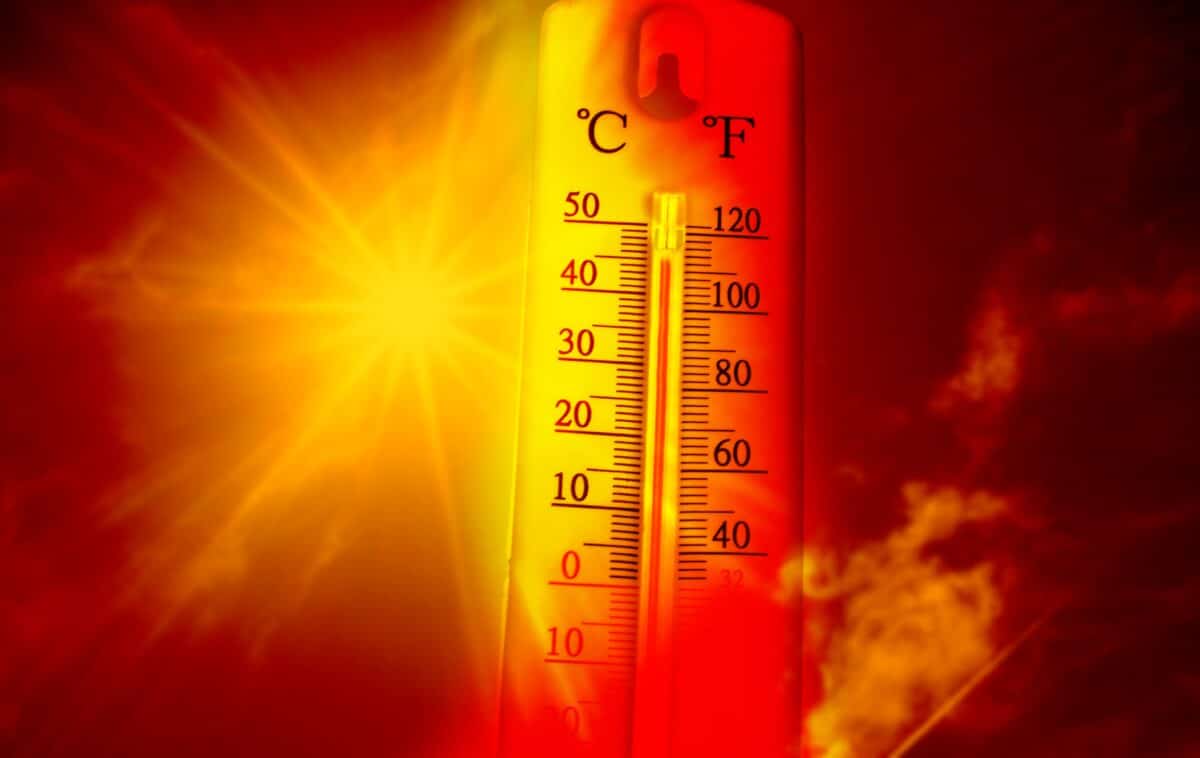
Are all heat waves fueled by climate change? (Melinda Nagy/Shutterstock)
In a nutshell
- The 2023 Texas-Louisiana heat wave was among the longest and most intense on record, with cities like El Paso and San Antonio breaking heat duration records; the event lasted nearly the entire summer, far exceeding typical heat wave metrics.
- Scientists developed a rapid response system to assess whether climate change played a role in extreme weather, using a two-step process combining 100 years of historical data with climate model simulations to determine how unusual and climate-linked the event was.
- The analysis found that similar droughts in the past would not have produced such intense heat, indicating that climate change significantly amplified the event, a critical insight for communities planning infrastructure and emergency response.
ASHEVILLE, N.C. — When a brutal heat wave grips a region, the immediate question from residents, officials, and the media is often the same: Is this climate change? A team of scientists has developed a new way to answer that question quickly and systematically, and they’ve just put it to the test, analyzing one of the most extreme heat events in recent U.S. history.
“Our main goal with this project is to be able to tell communities that are affected by extreme weather events whether they will continue to see more events like this in the future,” says study author Carl Schreck from North Carolina State University, in a statement.
For years, scientists have analyzed extreme weather events after they occur, but these analyses often took months or years to complete. By then, communities had already made crucial decisions about rebuilding and adaptation without knowing whether similar events might become more common. This new rapid response system aims to change that by providing insights while the impact is still fresh and decisions are being made.
In a paper published in Environmental Research: Climate, researchers from North Carolina State University and other institutions describe their new prototype system for evaluating what drives extreme temperature events across the United States. The system combines historical weather data, climate models, and statistical analysis to determine whether an extreme event is an anomaly or part of a changing pattern.

The 2023 Texas-Louisiana heat wave proved to be an ideal test case for this new approach. El Paso experienced 44 consecutive days with temperatures above 100°F (37.8°C), nearly doubling its previous record. San Antonio saw temperatures exceed 100°F on 65 out of 78 days from mid-June through August. For Texas, it ranked as the hottest summer on record in terms of persistent heat, narrowly beating out the infamous summer of 2011.
Power grids strained under the constant demand for cooling. Drought conditions intensified. Public health officials grappled with heat-related illnesses, particularly among vulnerable populations. Agricultural communities faced withering crops and stressed livestock. Understanding whether such conditions might become more common became crucial for long-term planning.
Analyzing an event of this magnitude posed unique challenges. Most heat wave analysis tools are designed to examine short bursts of extreme temperatures lasting 3-7 days. This event persisted for most of the summer.
“The other interesting piece of this event is that it occurred within the daytime warming hole,” says Schreck. “The warming hole refers to an area in the central U.S. where temperatures have not warmed at the same rate that we see over most other places. This is because increased precipitation there has kept afternoon temperatures from warming.”
The presence of this warming hole made the analysis particularly complex. While much of the world has seen clear warming trends in recent decades, this region has experienced a more nuanced pattern. Increased rainfall typically moderates high temperatures, but during the 2023 heat wave, a significant rainfall deficit removed this natural cooling effect.

To determine whether the heat wave was an anomaly or part of a new pattern, researchers first analyzed weather station records across the U.S. from the past 100 years to see how unusual 2023 was. Then they compared that data with the frequency of heat waves in both past and present predictive computer models. These sophisticated simulations helped them understand how today’s conditions differ from the past.
While the region has experienced droughts before, modern droughts are fundamentally different from their historical counterparts. Through their analysis, researchers discovered that while the extreme temperatures coincided with a significant precipitation deficit, the heat was more intense than what would have been expected for similar drought conditions in the past.
“A similar drought wouldn’t have been as hot 50 years ago,” says Schreck. “That tells us the heat wave is directly related to climate change and that we will see even hotter heat waves in the future.”
Infrastructure designed to withstand historical heat waves may not be sufficient for future ones. Emergency response plans may need updating to account for longer-duration events. Agricultural practices might need to adapt to more intense heat during drought periods.
The team’s rapid response system can also analyze cold snaps and other temperature extremes. This new system aims to provide crucial insights within weeks or months of an event, when the information can most effectively guide adaptation strategies and help communities make informed decisions about their future.
Methodology
The research combined historical records from thousands of weather stations, climate model simulations, and statistical analysis. Researchers looked at daily temperature and precipitation data, examined various climate patterns like ocean temperatures and atmospheric circulation, and used multiple climate models to understand how today’s conditions differ from the past.
Results
The study found that 2023 was unprecedented – weather stations in Texas and Louisiana recorded about 3.5 extreme heat events per station, compared to the previous record of about 2 events per station in 2011. When analyzing drought conditions, temperatures were 2-3°F warmer than similar drought conditions would have produced before 1980.
Limitations
As this was a prototype system being tested for the first time, researchers faced several challenges. The unusual duration of the heat wave required adapting traditional analysis methods. The presence of the “warming hole” phenomenon complicated the analysis, and current climate models may overestimate warming trends in summer heat extremes.
Funding and Disclosures
The research was supported by NOAA’s Climate Program Office and the U.S. Department of Commerce through various cooperative agreements with partner institutions including North Carolina State University’s North Carolina Institute for Climate Studies, the University of Colorado Boulder, and Princeton University.
Publication Information
The paper “A Rapid Response Process for Evaluating Causes of Extreme Temperature Events in the United States: The 2023 Texas/Louisiana Heatwave as a Prototype” was published in Environmental Research: Climate (Volume 3, 2024, Article 045017). The study was led by Carl J. Schreck III and included collaborators from NCICS, NOAA’s National Centers for Environmental Information, Physical Science Laboratory, and Geophysical Fluid Dynamics Laboratory, along with researchers from the University of Colorado Boulder and Princeton University.







